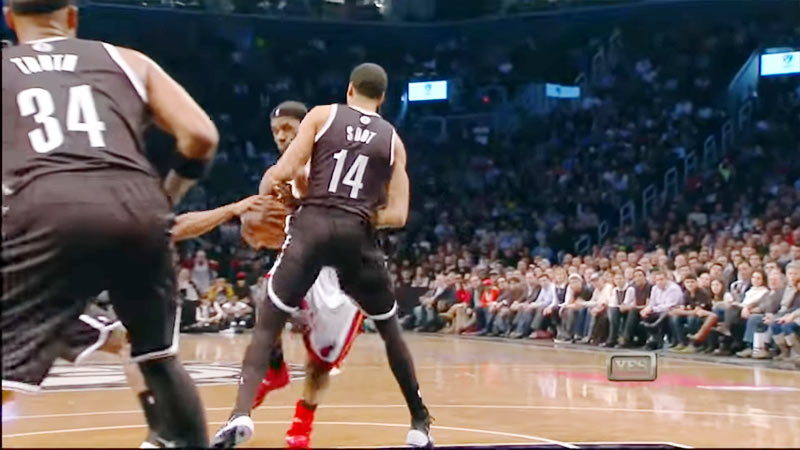In the game of basketball, fouls play a significant role in regulating player conduct and ensuring fair play.
One type of foul that often occurs during a game is a team foul. What a team foul is and its implications are essential for players, coaches, and fans alike.
In this article, we will explore the concept of a team foul in basketball, discuss when it is called, delve into the consequences of team fouls, examine the history of team fouls, and distinguish between team fouls and personal fouls.
What is a Team Foul in Basketball?
A team foul in basketball refers to the accumulation of fouls committed by a team during a specific period of play, typically a quarter or a half. It serves as a way to track and penalize a team’s collective fouls throughout the game.
When a player from the defending team commits a foul, it is attributed to the team and contributes to their overall foul count.
Team fouls play a significant role in the flow and dynamics of the game. They determine when a team enters the bonus or penalty situation, where the opposing team is awarded free throws for subsequent fouls.
This creates an incentive for teams to play with discipline and avoid unnecessary fouls, as the penalty can result in giving free points to the opposition.
The exact number of team fouls required to enter the bonus situation can vary depending on the level of play and league rules. In the NBA, for example, a team typically enters the bonus situation after committing their fifth team foul in a quarter.
Subsequent non-shooting fouls by the defending team will result in free throws for the opposing team.
Team fouls also reset at halftime, meaning that the foul count for each team starts anew in the second half of the game. This reset allows for a fresh start and an equal opportunity for both teams to manage their fouls effectively.
Tracking team fouls ensures a fair and balanced playing environment, as it encourages teams to play within the rules and penalizes excessive physical play.
It promotes player safety, strategic decision-making, and an overall more disciplined style of basketball.
Team Foul Rule in Basketball
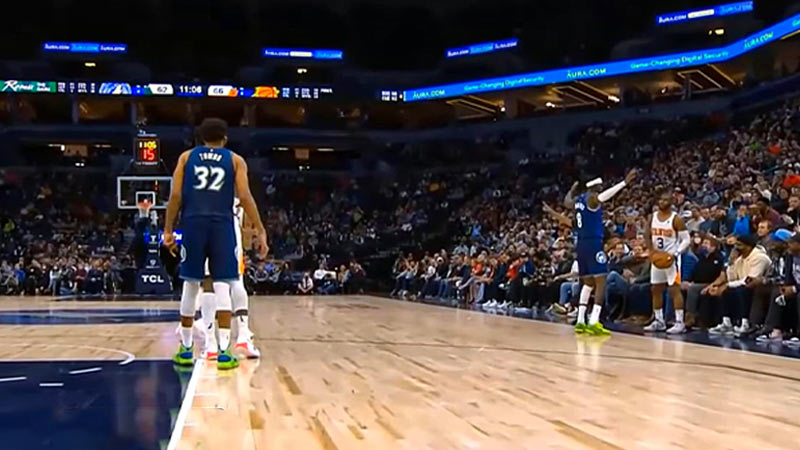
In the game of basketball, the team foul rule serves as a mechanism to regulate player conduct and maintain fair play on the court. Each time a player from a team commits a foul, it is counted towards the team’s total fouls.
These fouls can include various infractions such as personal fouls, technical fouls, or flagrant fouls. It is important to note that individual players can accumulate multiple fouls, but each foul is attributed to the team as a whole.
Reaching the Team Foul Limit
Once a team reaches a specified limit of team fouls within a given period, such as a quarter or a half, the opposing team enters a penalty situation. The exact limit can vary depending on the level of play and league rules.
In the NBA, for example, the penalty situation is typically entered after a team commits its fifth foul in a quarter.
Consequences of Team Fouls
When the opposing team enters the penalty situation, they are awarded free throws for subsequent fouls committed by the defending team. The number of free throws awarded can depend on the specific rules in place.
Generally, non-shooting fouls result in one free throw, while shooting fouls provide the opportunity for multiple free throws.
Strategic Implications
The team foul rule introduces strategic implications to the game. It encourages teams to play with discipline, avoiding unnecessary fouls that can lead to giving away free points to the opposing team.
Coaches may employ different defensive strategies to minimize fouls while maintaining effective defense. On the offensive end, teams may seek to draw fouls from the opposing team to gain free-throw opportunities.
Fairness and Game Flow
The team foul rule contributes to the overall fairness and flow of the game. It discourages excessive physical play, promotes skillful defense, and provides a balanced opportunity for both teams to score.
The penalty situation ensures that teams are held accountable for their collective fouls and that the opposing team can benefit from their opponents’ fouls.
When Is A Team Foul Called in Basketball?
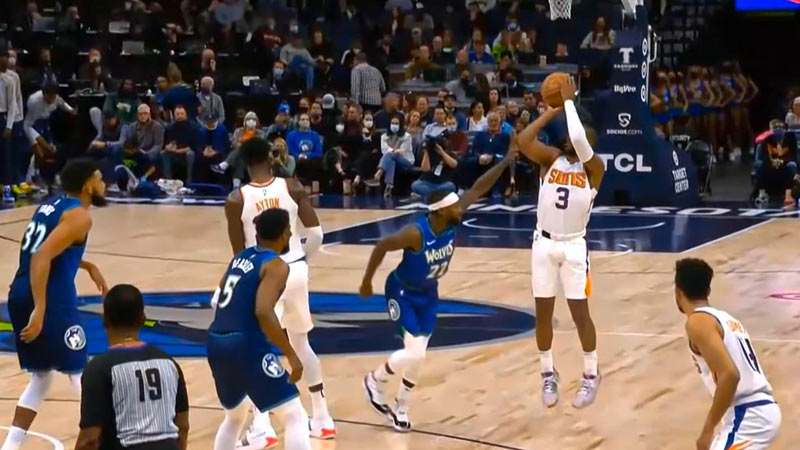
In the game of basketball, a team foul is called when a player on the defending team violates the rules set by the game.
These violations can include a wide range of infractions, such as making excessive contact, impeding the progress of an opponent, or committing other fouls outlined in the rulebook.
It is important to note that team fouls are distinct from personal fouls, which are specific fouls attributed to individual players.
Violations Leading to Team Fouls
Team fouls can occur as a result of various violations committed by players on the defending team. Common violations leading to team fouls include:
Personal Contact
When a player makes excessive contact with an opponent, such as pushing, holding, or tripping, a team foul may be called.
Charging
If an offensive player charges into a defender who has already established a legal guarding position, it can result in a team foul against the offensive team.
Illegal Screens
Setting an illegal screen by moving or not establishing a stationary position can lead to a team foul.
Grabbing or Holding
Holding an opponent to impede their progress or gain an unfair advantage is considered a team foul.
Defensive Three Seconds
If a player on the defending team remains in the paint (restricted area) for more than three seconds without actively guarding an opponent, it results in a team foul.
Accumulation and Penalty
Each time a player commits a foul, it is attributed to their team and contributes to the team’s overall foul count.
Once a team reaches a specified limit of team fouls within a given period, usually a quarter or a half, the opposing team enters the bonus or penalty situation.
This means that any subsequent fouls committed by the defending team will result in free-throw attempts for the opposing team.
Resetting of Team Fouls
In most basketball games, team fouls reset at the start of each quarter or half. This means that the foul count for each team starts anew, and the teams have an equal opportunity to commit fouls without penalty until reaching the specified limit again.
What Are the Consequences of A Team Foul?
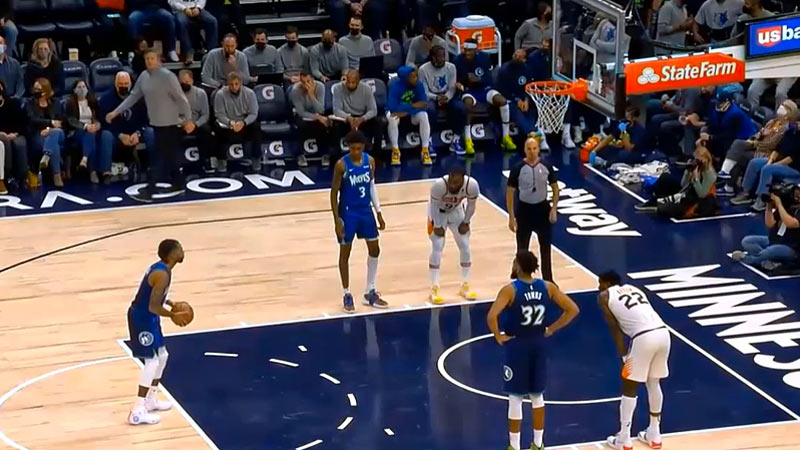
The consequences of a team foul can vary depending on the specific game rules and the number of team fouls accumulated.
Typically, after a certain number of team fouls, the opposing team enters the bonus or penalty situation.
This means that any subsequent fouls committed by the defending team will result in free-throw attempts for the opposing team.
The number of free throws awarded may increase with each additional team foul, further incentivizing teams to play with discipline and avoid unnecessary fouls.
History of Team Foul in Basketball
In the early days of basketball, individual fouls were recorded separately, and free throws were awarded for each personal foul committed. This system placed a heavy emphasis on individual players’ fouls and required keeping track of multiple fouls throughout the game.
Introduction of Team Foul Concept
As the sport evolved, it became evident that tracking individual fouls could be cumbersome and could disrupt the flow of the game. To simplify the tracking process and provide a more consistent penalty system, the concept of team fouls was introduced.
Simplifying Fouls
The team foul concept aimed to simplify the tracking of fouls by attributing them to the team rather than individual players.
This allowed for a more streamlined approach to fouls, reducing the need to keep track of multiple fouls for each player. Instead, the focus shifted to the overall fouls committed by the team.
Consistent Penalty System
The implementation of team fouls also led to a more consistent penalty system. Instead of awarding free throws for each individual foul, teams entered penalty situations based on the accumulation of team fouls within a given period, typically a quarter or a half.
This provided a standardized approach to penalizing teams for their fouls, ensuring fairness and equal treatment.
Refinement of Rules
Over time, the rules regarding team fouls have been refined and modified to enhance the game’s fairness and balance.
Different leagues and organizations may have specific guidelines on the number of team fouls required to enter the bonus or penalty situation, as well as the number of free throws awarded.
Impact on the Game
The introduction of team fouls had a significant impact on the game of basketball. It encouraged teams to play with discipline and avoid unnecessary fouls, as excessive fouling would result in penalty situations and free-throw opportunities for the opposing team.
It also created strategic elements within the game, as teams had to manage their fouls and make calculated decisions on when to be aggressive or cautious.
The concept of team fouls in basketball has played a crucial role in simplifying the tracking of fouls and providing a consistent penalty system.
From the early days of recording individual fouls to the introduction of team fouls, the rules have evolved to ensure a fair and balanced playing environment.
Team Foul vs. Personal Foul in Basketball
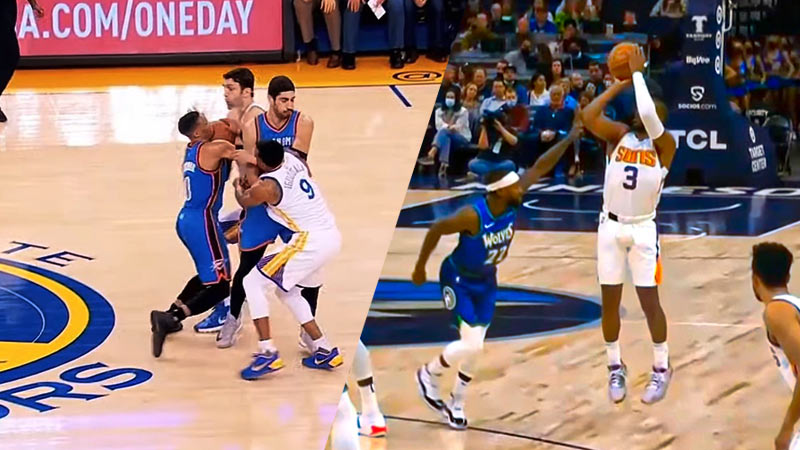
It is important to distinguish between team fouls and personal fouls in basketball. These two types of fouls serve different purposes and have varying implications for players and teams. Let’s take a closer look at each of them:
Team Foul
A team foul refers to the accumulation of fouls committed by the players of a team, contributing to the team’s total foul count. Each time a player commits a foul, it is attributed to the team as a whole.
Team fouls are counted throughout a specific period, such as a quarter or a half, and can impact the penalty situation for the opposing team.
Personal Foul
A personal foul, on the other hand, is a specific foul committed by an individual player. Personal fouls are attributed to the player who committed the infraction and can result in penalties such as free throws, disqualification, or other consequences based on the severity of the foul.
Personal fouls are tracked for each player individually and can lead to a player fouling out if they accumulate a certain number of fouls, usually five, in most basketball leagues.
Implications and Penalties
The distinction between team fouls and personal fouls affects the penalties imposed on teams and individual players:
Team Foul Penalties
Team fouls contribute to the team’s overall foul count. Once a team reaches a specified limit of team fouls within a period, the opposing team enters the bonus or penalty situation.
This means that any subsequent non-shooting fouls by the defending team will result in free-throw attempts for the opposing team.
The number of free throws awarded may increase with each additional team foul, encouraging teams to play with discipline and avoid unnecessary fouls.
Personal Foul Penalties
Personal fouls directly impact the player who commits the infraction. Depending on the severity of the foul, penalties can include awarding free throws to the opposing team, disqualification from the game, or other consequences outlined in the rulebook.
Personal fouls are tracked for each player individually and can have significant implications for their playing time and the team’s overall strategy.
FAQs
How many team fouls are allowed in a quarter in basketball?
The number of team fouls allowed in a quarter can vary depending on the level of play and league rules. In the NBA, for example, the penalty situation is typically entered after the team commits its fifth foul in a quarter.
What happens when a team reaches the bonus situation?
When a team reaches the bonus situation, the opposing team is awarded free throws for each subsequent non-shooting foul.
The number of free throws can vary, often starting with one free throw for non-shooting fouls and additional free throws for shooting fouls.
Do team fouls reset at halftime in basketball?
Generally, team fouls reset at halftime in basketball. This means that the foul count for each team starts anew in the second half of the game. However, it’s essential to consult the specific league or tournament rules, as variations may exist.
Can a player foul out due to team fouls?
No, a player cannot foul out solely due to team fouls. A player can only foul out by accumulating a certain number of personal fouls, typically five in most basketball leagues.
What is the purpose of tracking team fouls in basketball?
Tracking team fouls allows for a fair and consistent penalty system. It ensures that teams are held accountable for their collective fouls, discourages excessive physical play, and provides a mechanism for the opposing team to benefit from the defending team’s fouls.
End Call
The concept of team fouls in basketball is crucial for players, coaches, and fans. The accumulation of team fouls can lead to significant consequences, such as entering the bonus situation and awarding free throws to the opposing team.
By familiarizing yourself with the rules and history of team fouls, you can gain a deeper appreciation for the strategic aspects of the game and promote fair play on the court. Thank you.

